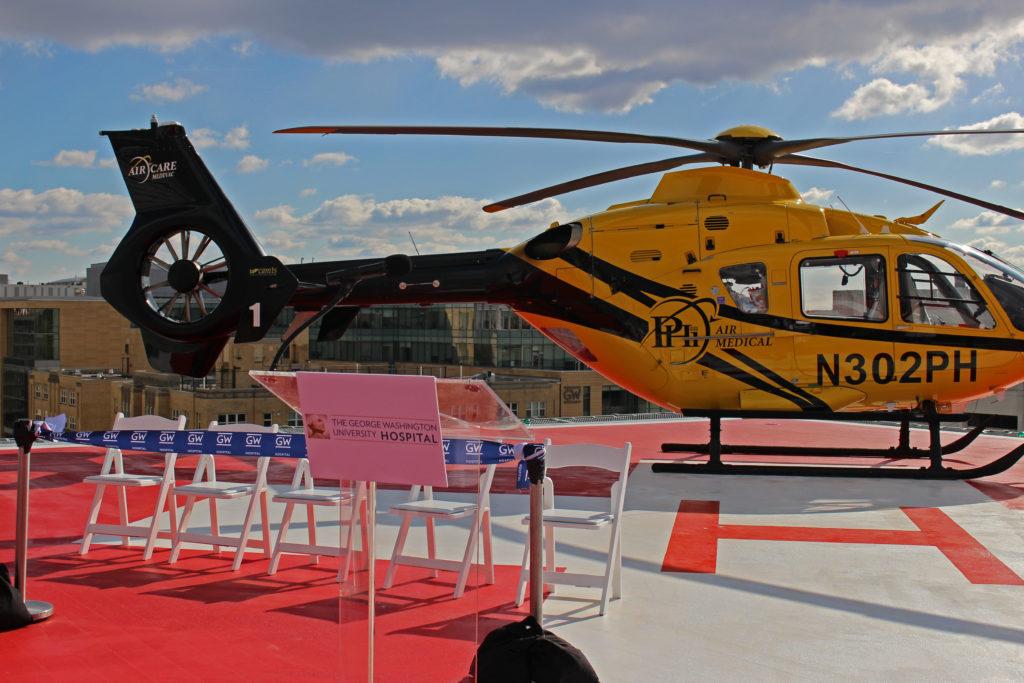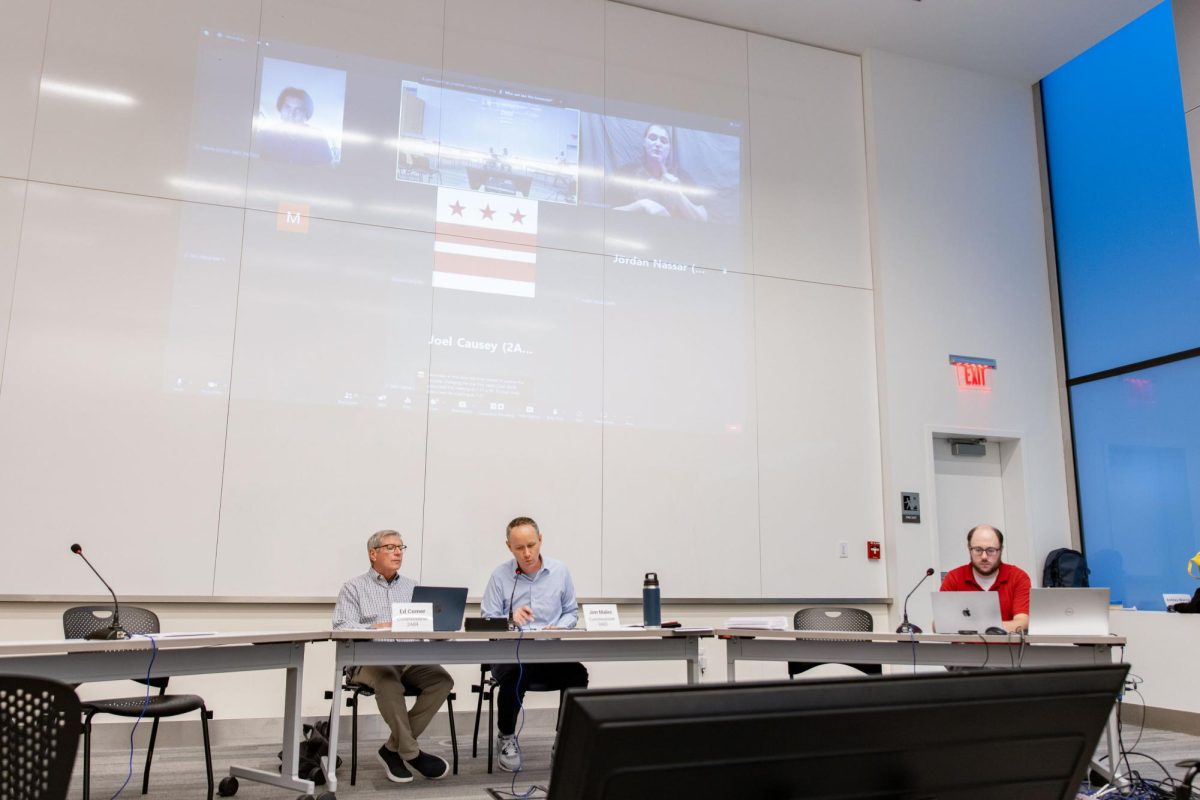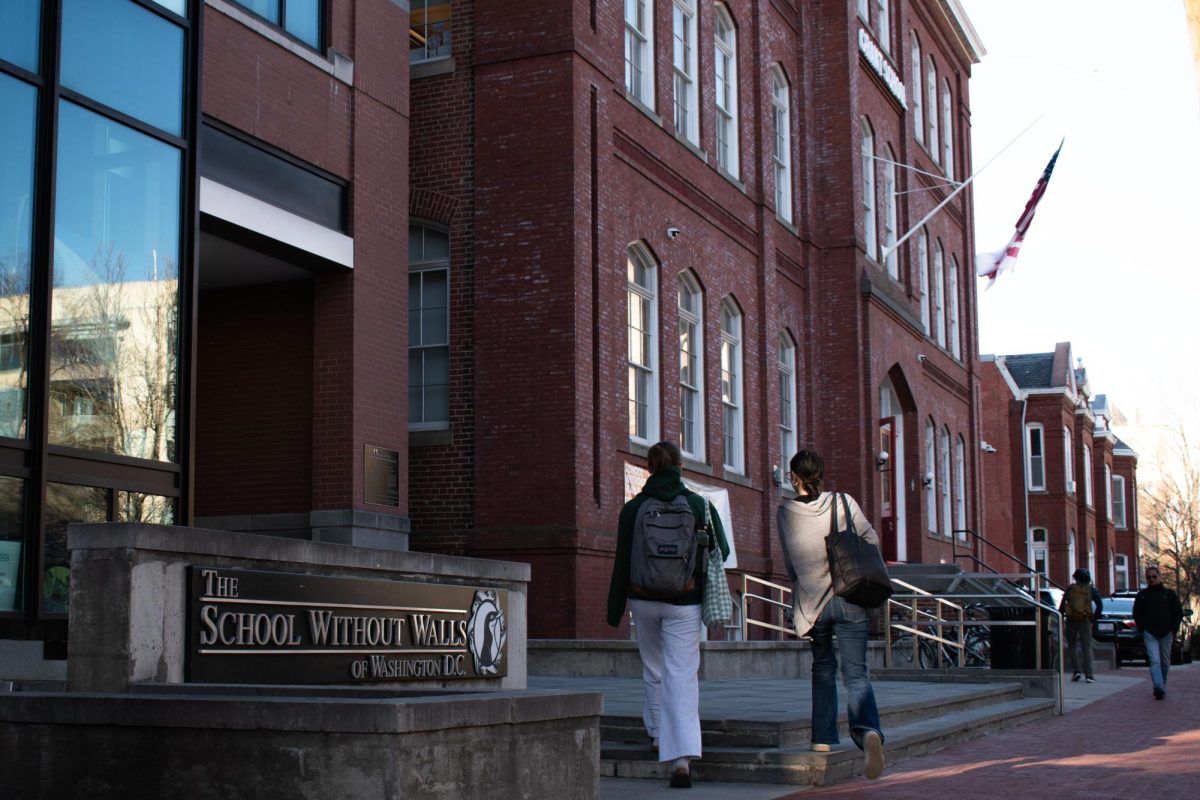Nearly two years after the GW Hospital opened its helipad for emergency medical transports, officials say the platform has helped hundreds of patients receive quick medical care.
GW Hospital data shows about 220 flights have arrived to the helipad in the past 22 months since the site’s opening. Hospital officials said the helipad has helped save lives, and residents say it has caused minimal disruptions despite a multi-year community debate over noise and safety concerns leading up to its 2018 approval from the D.C. Council.
GW Hospital spokesperson Susan Griffiths said about 10 patients have been transported to the hospital by helicopter each month, which aligns with the hospital’s projections for its use before construction.
“The George Washington University Hospital is honored to provide lifesaving care to individuals throughout the D.C. region through our helipad and critical care services,” she said in an email.
Griffiths said helipad landings are reserved for patients who are facing imminent danger from illness or injuries, including gunshot wounds and heart failure, according to hospital data from November 2019 through June 2020.
“Flights come from around the D.C. region,” she said. “All of these patients were critically injured or ill and required emergent, high-level care.”
The helipad was the subject of intense debate before its construction, when some neighbors voiced concerns that loud choppers transporting patients could wake residents in the middle of the night. A 2017 GW Hospital study found that the noise levels helicopters cause was similar to ambulance sirens.
Griffiths said the hospital provides semi-annual reports with data on the frequency of the helipad’s use and late-night flights to the Foggy Bottom and West End Advisory Neighborhood Commission as part of an agreement with commissioners. The agreement, meant to soothe noise and safety concerns of Foggy Bottom residents, limits the number of yearly flights to 175 and requires the hospital to notify the ANC of any late-night flights within 72 hours after they happen.
The most recent helipad usage report available on the ANC’s website is from the first six months of 2020. Griffiths did not return a request for updated information.
“We continue to remain in close contact with the Foggy Bottom neighborhood and are committed to being good community partners,” she said.
The ANC approved plans for the helipad in October 2017 in a three-to-two vote, and the D.C. Council unanimously approved the hospital’s proposal in June 2018 before its opening in November 2019.
Flight-specific data is publicly available for 77 flights from the helipad’s November opening through June 2020, with information about landing time, patient diagnosis and reason for each flight. Seventeen of the flights occurred between the hours of 11 p.m. and 6 a.m., under the 25 percent threshold that the hospital must remain below to comply with the neighborhood agreement.
The data shows that four gunshot wound victims and 10 stroke victims were flown to GW during the eight-month period, as well as five unspecified “trauma” victims.
Jeri Epstein, the chair of the ANC, said the helipad’s quick response capabilities make it a necessary addition to the hospital, which is one of two Level 1 trauma centers in the District.
“The fact that we could be saving somebody’s life by providing an emergency landing for a helicopter and getting that person the medical attention he or she needs, to me that that is overwhelmingly important,” she said.
Epstein said D.C. experiences significant helicopter traffic, and a handful of additional flights and more noise each week is worth saving lives.
“You have the traffic helicopters, you’ve got Marine One, you’ve got military helicopters, you’ve got corporate helicopters going up and down the river and landing at the private aviation space,” she said. “There are a lot of helicopters. If we had three helicopter flights in one week and saved three lives, I just don’t have a problem with that.”
Marina Streznewski, the former president of the Foggy Bottom Association who led the group during the debates over the helipad, said the benefits of saving lives greatly outweigh concerns about noise.
“It continues to save lives,” she said. “It was, as far as I’m concerned, an absolute no-brainer. It was constructed to save lives. Period, end of story.”
Barbara Kahlow, the secretary-treasurer of the West End Citizens Association, said the hospital has not done a “sufficient” job at providing details about the frequency of the helipad’s use to the Foggy Bottom community. Kahlow said several residents have experienced “objectionable” noise from helicopters during the early morning hours, but WECA members want to see more data before deciding whether they should urge hospital officials to shut down the helipad.
“The WECA wants more transparency of information before taking an uninformed position,” she said in an email.
John George, the current president of the Foggy Bottom Association, said some residents have requested additional information about the frequency and times of flights, but the helipad has been an overall success because of the lives it has helped to save.
“The helipad has helped those individuals specifically in need to get the medical attention that they should, and whenever that happens, that’s a good thing,” he said.







